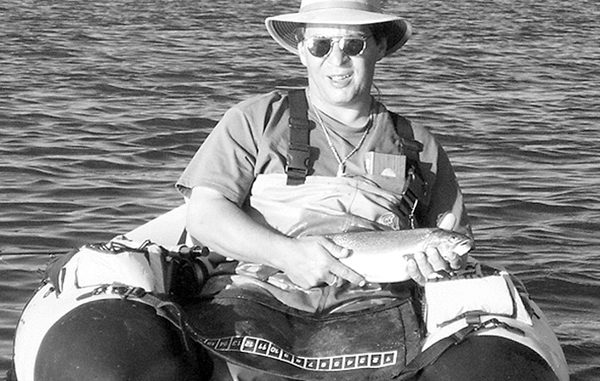
There’s more to squirrel hunting than walking into the woods. Here’s two experts’ tips for bagging a limit.
I’ll never forget the time one of my 7th-grade classmates totally outwitted our science teacher, who had more degrees than a thermometer.Steven challenged the teacher to a test, one where each person asked themselves a question, and had to answer their own question. Our teacher, awfully curious about this, agreed to participate.
“What color shirt am I wearing?” Steven asked.
“Green,” Steven replied.
“Who was the first president of the United States?” asked the teacher.
“George Washington,” the teacher responded.
This went on for about a minute, each person asking — and answering — a fairly easy question.
Then, Steven came up with an odd entry.
“How does a rabbit dig a hole without leaving any dirt on top?” he asked.
“The answer is: He starts from the bottom.”
The teacher was perplexed by the answer.
“The bottom of what?”
Steven smiled.
“That’s your question — you answer it!”
That incident was a valuable lesson to both the teacher and myself.
He learned never to trust Steven, and I learned that all the book smarts in the world can’t make up for common sense.
That’s what amazes me about fly fishing. It’s a sport where you never stop learning. Even if you could learn everything, there’s always something new being introduced.
And yet, despite what seems like an information overload, it’s often the very plain things that work best.
Here’s a few items from my KISS list — “Keep It Simple and Sensible.”
• Leaders. There are more published formulas for leaders than contestants for American Idol. Unless you enjoy tying lots of tiny pieces of mono together, I suggest using a three-section leader.
For example, my favorite marsh leader consists of 3 feet of 20-pound mono (butt section), 3 feet of 16-pound mono (mid-section), and 2 feet of 12-pound tippet.
Using light material allows flies to sink faster and have more action, while the fewer sections result in less tangles, fewer breakages and less “gunk” when fishing weedy ponds.
• Casting. Being a good caster takes good technique and lots of repetition, but often the right leader, line or rod can make a difference in your cast.
For wind-resistant flies, shorten the leader. In fact, a good rule of thumb is that the leader should be no longer than the fly rod (except for gin-clear waters).
If this doesn’t work, it could be the rod is too stiff for the line weight. Either move up one weight, e.g., put a 6-weight line on your 5-weight rod, or if the line is a double taper or triangle taper, cut off the first 3 feet (sounds drastic, but a lot of seasoned fly anglers do it).
• Selecting a fly. My friend Ron Begnaud says you catch more fish watching the water than casting. What he means is that a few minutes of observation pay big dividends.
If you’re on a trout stream during a dry-fly hatch, it’s fairly easy to “match the hatch.”
Fresh and salt water may not seem so simple, but paying attention to the type of food organisms present, what they’re doing and any surface activity all go a long way toward making a good choice.
Flies you read about should be considered recommendations; it’s up to you to reason what these fish in this water might want to eat. Think like the fish, be the fish!
• No cast is a good cast. With all the emphasis on distance casting these days, how ironic that one of the most-proven techniques is to have 5 feet of line outside the rod tip, and work the fly rod like a jigging pole.
You won’t read that in any fly fishing book — it’s considered bordering on commie fishing! Regardless, it works. Just be aware it takes stealth to approach a fish this close.
• Use the current. It takes a great caster to put the fly onto a point or into a feeding lie, but it takes a creative caster to know this can be accomplished just as easily by arranging your position in the water so that wind, tide or current will swing the line and the fly into the area most likely to hold fish.
For example, casting upcurrent from a point and letting the fly sweep past the point is far more likely to catch reds, drum or flounder than casting directly to the point.
These are just a few tips for now. Nothing really special about them, just some common sense. Apply them, and you’ll be way ahead in the game.


